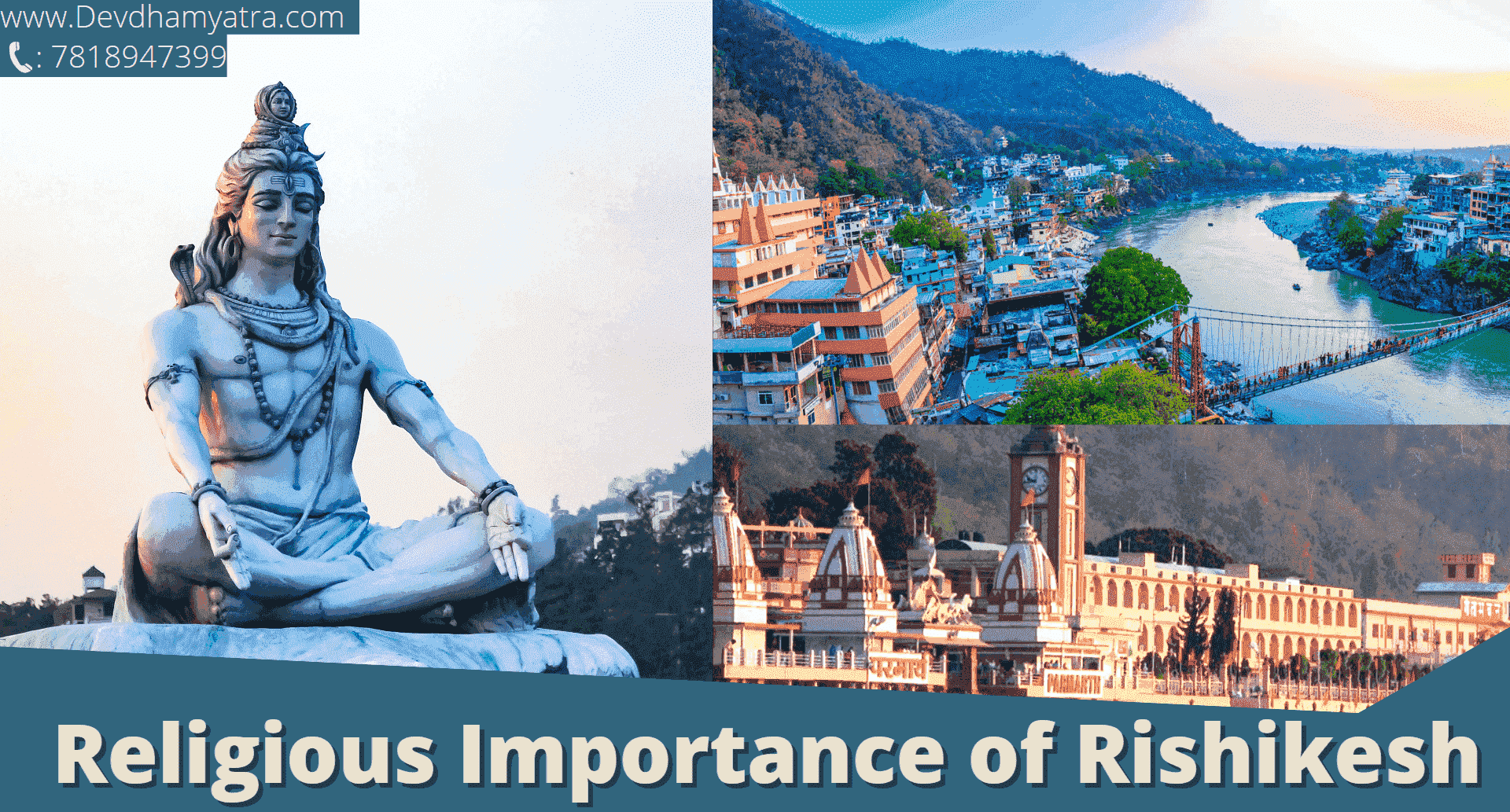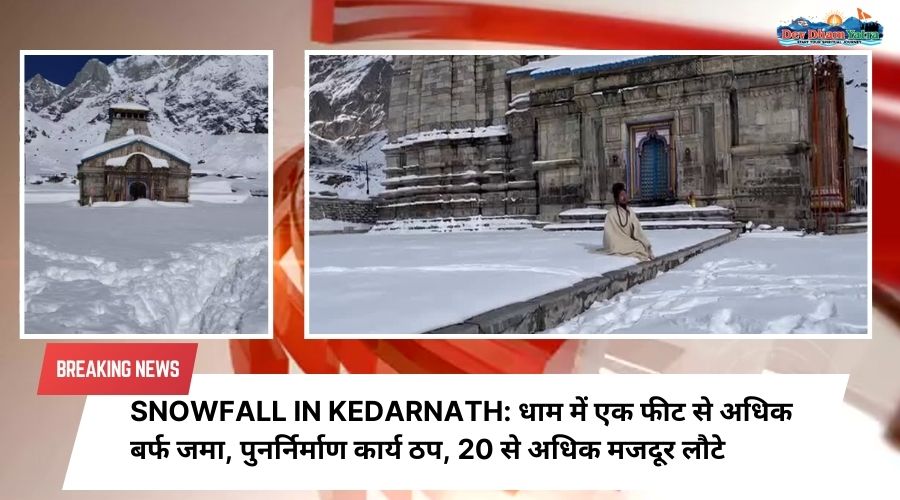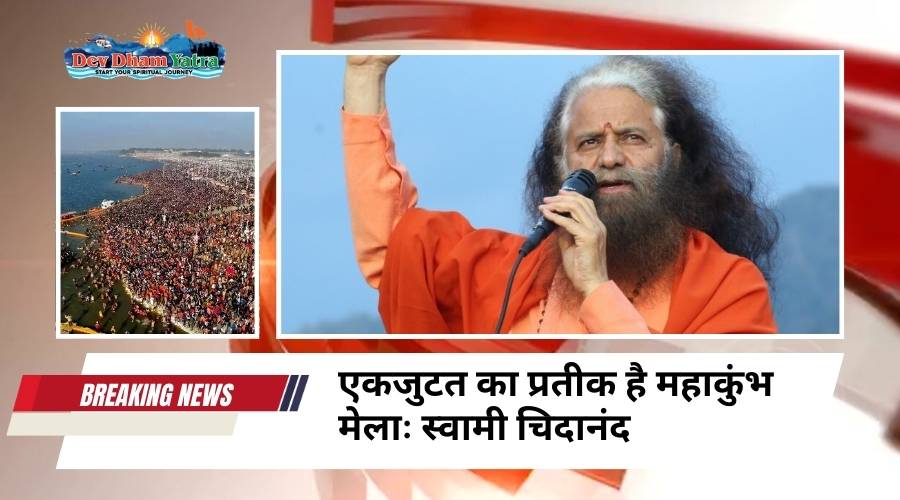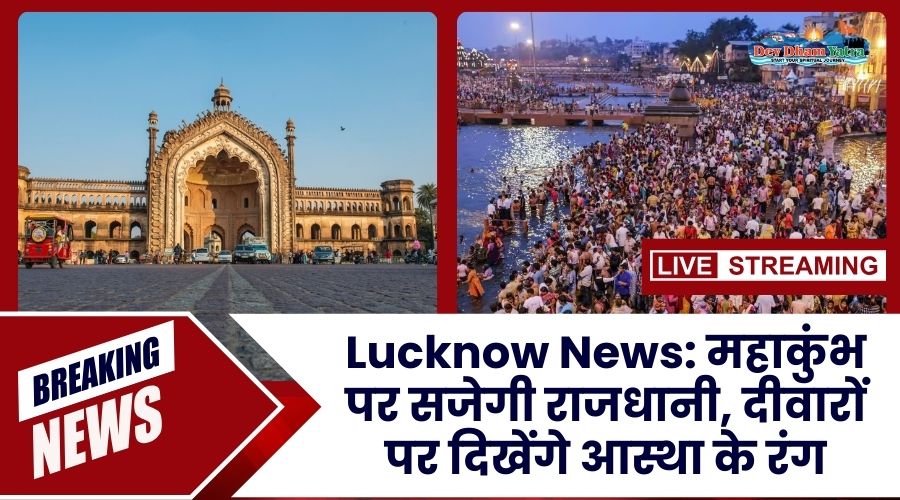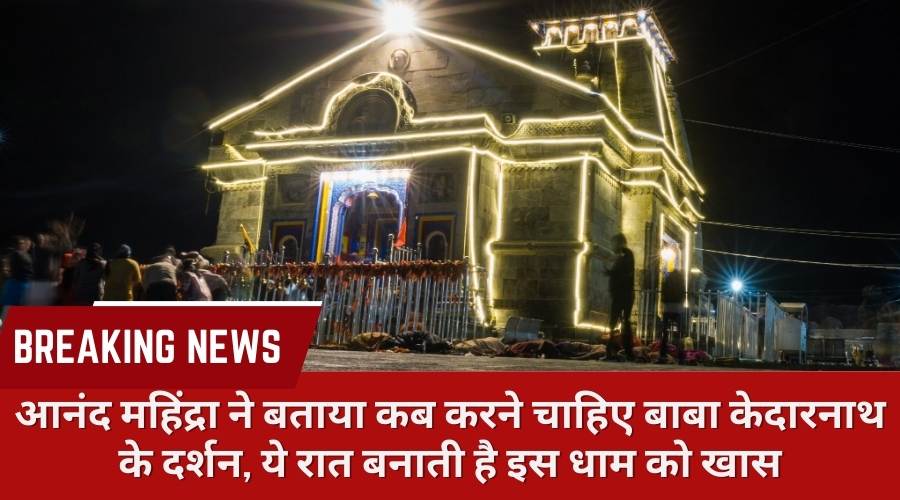Religious importance of Rishikesh
One of the holiest destinations for Hindus, it is known as the pilgrimage town. Since the beginning of time, Hindu gurus and saints have traveled to Rishikesh to practice meditation and seek for greater knowledge.
Rishikesh is located in the Dehradun district of Uttarakhand state in India. Rishikesh is made up of a combination of two words Rishi means senses and Esha means god means the god of senses. Rishikesh was the residence of a famous Rishi Raibhya . He did penance on the banks of river Ganga for many years. Impressed by this, Lord Vishnu appeared to Raibhya Rishi in the form of Rishikesh. Since then this place was named Rishikesh. it is a very holy place for Hindus. Every year many Hindus come here for worship and yoga and meditation. Not only Hindus but people from all over the world come here every year to do meditation and devotion. It is also called the gateway to the Himalayas, here the Gangas will leave the mountain ranges and move towards the flat surface. Rishikesh is famous for its yoga centers, ashrams, and temples. It is also considered as the gateway to Kedarnath, Badrinath, Gangotri, and Yamunotri. It is said that by meditating on this place salvation is attained.

Nilkanth Mahadev Temple
According to the Hindu mythology, it is said that During the churning of the ocean (Samundra Manthan) by the gods and asuras, when the plow solution was poisoned. So the whole world started burning with the flame of poison. No one was able to stop the effect of poison between the gods and the demons. Then all the gods prayed to Lord Shiva, then Lord Shiva carried the poison in his throat. And his throat turned blue due to the effect of the poison. For this reason, Lord Shiva is known as Neelkanth Mahadev. When the effect of poison started increasing in the body of Lord Shiva, he went to the hills of Manikoot. Seeing the beautiful scenery and beautiful waterfall there was a desire to rest in his mind, Lord Shiva ended the effect of poison after absorbing 60000 years.

After which Mata Parvati and all the gods visited him. From there Lord Shiva started towards Mount Kailash and at this place, Lord Shiva established his throat in the form of a pind. Today people know as Neelkanth Mahadev Temple and also worship here.

Laxman jhula at Rishikesh
This jhoola connecting the Gangas river from one bank to the other is a distinct identity of the city. it is said that Laxman Ji made a jute swing at this place to cross the river Ganges. It was rebuilt in 1939. It is a suspension bridge. Because of that, this bridge was named Laxmana jhoola. This Jhoola is built between Shivanad and Swarg Ashram, hence it is also known as Shivanand Jhoola. There is also a temple of Laxman Ji on the west side of the bridge.

Ganga aarti at Paramarth Rishikesh
Every evening Ganga ji’s aarti is performed here and devotees come here to seek the blessings of Mother Ganga and perform her aarti. It is also commonly called Maha Aarti. Many sadhus and their students perform Yagya here and then do bhajan and after that do aarti. Every evening this aarti is performed. here and it is done with a big ghee lamp and it is rotated clockwise. and everyone touches it and takes the blessings of maa Ganga.

Triveni ghat at Rishikesh
Triveni Ghat is the confluence of three holy rivers Ganga Yamuna and Saraswati. This is the most revered holy bathing place in Rishikesh. It is situated on the bank of the river Ganges. Pilgrims mostly use this ghat for Sanan. It is also believed that those who take bath in Triveni Ghat get freedom from all the sins committed by them. Triveni Ghat is an important place in Hindu mythology and Puranas. And it is also mentioned in Ramayana and Mahabharata.

Ram jhoola at Rishikesh
One of the main attractions in Rishikesh, the capital of yoga, is Ram Jhula, which is placed at Muni Ki Reti. It is a suspension bridge that was constructed over the Ganges River in 1986. This 450-foot-long bridge, also known as Shivananda Jhula, connects Swarg Ashram with the Shivananda Ashram region. Many well-known ashrams, including Gita Bhawan, Parmarth Niketan, and Yog Niketan, are near to the bridge and provide meditation and spiritual enlightenment. Lakshman Jhula, another well-known suspension bridge in the area, and Ram Jhula share a lot in common in terms of architecture.

Bharat Mandir at Rishikesh
The oldest and most well-known temple is Shri Bharat Mandir, which is located in the center of the city. Indeed, the history of the temple is Hrishikesh’s history. In Kedar Khand, the glory of this famous temple is described (Vide Chapters 115 to 120)
In the seventeenth Manavavtar, Lord Vishnu Himself declared, “I will live here forever as Hrishikesh Narayan and this city will be called as Hrishikesh.” He felt pleased by Raibhya rishi’s strict penance. Liberation is certainly due to those who adored me as Varah in the Satyug, Parashuram in the Treta Yug, Vaman in the Dwapar, and Bharat in the Kaliyug.
Shubham Arya

